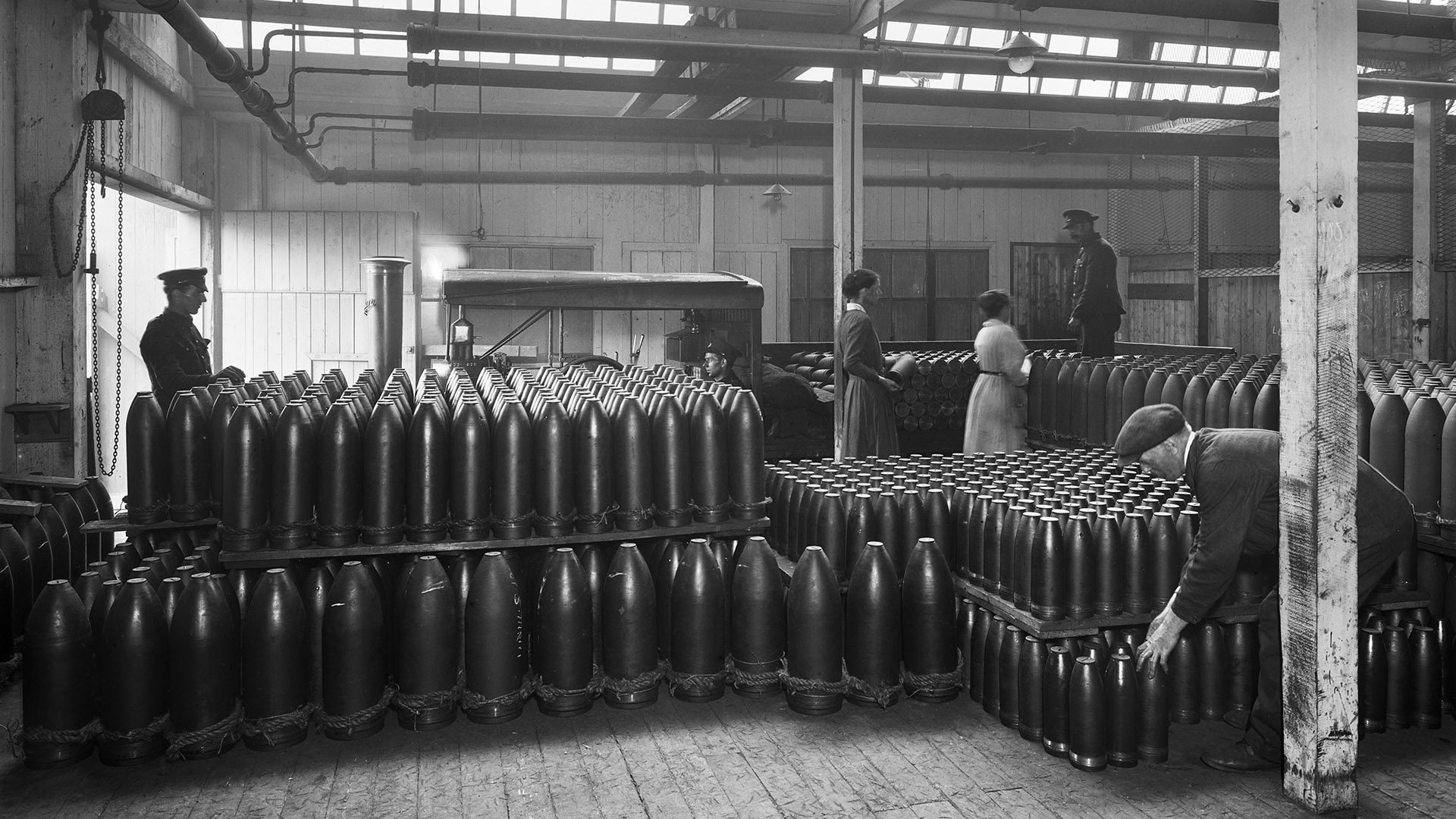First World War: Munitions Factories
Historic England investigations have identified 150 out of 218 First World War government factories in England that manufactured everything from tanks and gas masks, to bullets and shells. These include those that were requisitioned for the war effort, as well as purpose-built factories constructed to the latest design principles. Many have been demolished; some still remain in use and others may be traced as archaeological earthworks. Further work is needed to find the unlocated factories and to assess their significance.
In 1914 the British armaments industry was primarily geared to supplying the needs of the Royal Navy, export markets, and a small regular army. The navy’s and army’s relatively modest armament needs were largely met by state-owned factories and a handful of private firms. But by autumn 1914, it was clear that the essentially static trench warfare of the Western Front required huge numbers of artillery pieces, shells, and explosives.
Initially, to meet this demand England’s existing factories were expanded, but by spring 1915 the so-called ‘Shell Scandal’ (too few being produced and too many of those that were failed to explode) led to further state control and the creation of the Ministry of Munitions and over 200 National Factories.
To feed the fighting fronts the First World War became a war of production. The armed forces consumed vast amounts of munitions, requiring huge quantities of steel, copper, explosives and other materials. Historic England has identified the majority of the government factories. They manufactured everything from shells to tanks, gas masks, and boxes.
Hundreds of existing manufacturing companies were turned over to war production. As men rushed to join the colours, employment opportunities for women greatly expanded and their wage rates rose considerably. In some factories more than 90% of the workforce were women.
By 1917, about two million workers were engaged in munitions work in thousands of establishments regulated by the Ministry of Munitions. A selection of different munitions factories are shown on the following pages and further details of the recorded factories may be found online at Pastscape.





